
Copyright © 2003 the Brewery History Society
|
Journal Home > Archive > Issue Contents > Brew. Hist., 111, pp. 15-34 |
A Survey of the Brewery Heritage of Essex |
by Tony Crosby |
In the summer 2002 edition of this journal our editor encouraged members to share recently taken photographs of breweries in order to ‘show how much of our brewing heritage still remains’. While it is commendable that individuals and groups such as the BHS and its members photograph and otherwise record the heritage of the brewing industry, we must not forget the responsibility of local and national government for preserving this heritage.
Essex County Council is one Local Authority which takes this responsibility very seriously. In 1994 they began a project to identify record, protect and manage the county's industrial heritage through extensive thematic surveys. Since its inception a total of 16 thematic reports have so far been produced on such industries as malting (two volumes), lime burning, iron foundries, radio electronics, public water supply, textiles and road transport. There have also been a number of intensive site surveys undertaken within the planning framework in order to inform future schemes of re-use or to make a permanent record of those elements that will be destroyed. Included in these intensive surveys are:-
The purpose of these extensive thematic surveys is to establish the priorities within the industry, thereby enabling an appropriate response should significant remains become threatened, to assess existing statutory designations and to formulate a coherent management strategy. Assessing the significance of each site and recommending a statutory framework for the future management of remaining structures (principally Listed Building or Conservation Area status or the continuation of existing status) ensures that the site's significance is given proper consideration when change, either alteration or new development, is proposed. The surveys also provide a baseline against which the importance of newly recognised sites can be accurately judged. The survey reports are available for public consultation at Essex Heritage Conservation Record and Essex Record Office in Chelmsford and at the National Monuments Record in Swindon. The most recent survey undertaken in 2002 has been that on Essex Breweries2.
As an ancient activity brewing has traditionally been carried out on a private domestic scale alongside other domestic production of food and drink. Thus ale and beer have been produced at home for family consumption, on farms and estates for the landowner's family and workers, and in various institutions (religious communities, colleges and hospitals) for those who lived in and visited them.
In Essex medieval religious communities known to have possessed brewhouses include the twelfth century Hatfield Broad Oak Priory, which had both a malthouse and brewhouse, Waltham Abbey, Prittlewell Priory and the Carmelite Friary Mansion House at Maldon.
Documentary evidence for the widespread existence of private brewhouses can be found in probate inventories and wills. An analysis of Elizabethan life in Essex 3, when ale and beer were people's staple drink, has demonstrated that homes had ‘… brewing equipment often found in a separate little building referred to as a brewhouse. There may also have been a malthouse and a buttery in which the barrels were stored‘. In an analysis of farm and cottage probate inventories in just two parishes of Essex 4 , 65 references to brewhouses are to be found as well as references to equipment and many to beer butteries (both for small beer and strong beer) which were used for the storage of beer making equipment, vessels and the beer itself.
Many farms and estates of the County are also recorded as having brewhouses, probably the best known being Audley End House, where Robert Adam built the brewhouse in 1763. Ingatestone Hall's brewhouse is earlier, dating from the construction of the new Hall in the mid 16th century. Farms, such as Richard Brown's ‘Horsfirth Park’ and Writtle and Thomas Crush's ‘Dukes’ in Roxwell, are recorded in probate inventories as having both a malthouse and a brewhouse. Thomas Crush's brewhouse contained in 1686 when the inventory was made, ‘… one copper, one little leade, one mashing tubb and underback, one cooler …’5
Gorrell's Farm, Highwood retains its early 18th century detached timber-framed brewhouse. Its brick chimney stack served not only the brewing copper but also a wash-house copper and bakehouse oven.6
Warley Hospital, built between 1851–53, was the only hospital in the County recorded as having had a brewhouse.
There are, therefore, many examples of these private brewhouses in Essex, most of which are already known and have been recorded and protected in the context of the whole site or main structure, such as Waltham Abbey, Audley End House, Warley Hospital and a number of farms. The 2002 survey of Essex Breweries therefore concentrated upon the commercial brewing undertaken by retail publican brewers and common brewers and the associated brewhouses and breweries.
45 sites were assessed as part of the survey and in the absence of a typology for breweries three seemingly straightforward categories or types were drawn up; although inevitably there are overlaps between the categories and also grey areas in which there is uncertainty as to which category a particular site best fits. These three categories are Public House Brewhouses, Unattached Brewhouses and Integrated Brewery Complexes.
There were in Essex, as across the country generally, a great many public houses run by retail publican brewers who were, prior to the 18th century, the other main producers of ale and beer apart from the private brewers. However, such activity declined particularly during the 19th century, hence their brewhouses have become disused and been converted to other uses or demolished. It proved difficult therefore to identify the actual room or structure in which the brewing took place such had been the alteration of structures in the intervening years. Nine homebrew public houses were assessed as part of the survey and they are amongst the earliest sites included, the public houses themselves dating from the 16th century and brewing certainly taking place from the 18th century if not earlier.
The location of the individual sites was found to range from the village public house such as The Old Crown Inn at Messing (which retains some interesting ancillary structures) to those in the urban areas such as the former Kings Head Inn in Colchester and Alfred Fielder's Brewery Tap and brewhouse in Kings Road Brentwood. This mid 19th century public house and brewhouse still exists, although much altered. The formerly single storey Brewery Tap is now two storeys and the three storey brewhouse has been converted to retail use, losing its distinguishing features in the process. Due to their age, construction and location most (88%) of these public houses are listed buildings and/or within Conservation Areas on their own account, quite apart from any association with brewing. Five are still in use as public houses, while three are private dwellings and one is used as offices.
Two, however, are deemed to be of greater significance due to the existence of what was probably the actual brick built brewhouse, these being the former Talbot Inn at Stapleford Tawney and the Marine Brewery at The Brewers Arms, Brightlingsea. Brewing began at the Talbot Inn in c1855 and ceased in 1874, since which time it has been a private dwelling known as Talbot House. A brick and partially weather-boarded structure with a chimney adjacent to the house was probably the brewhouse. The Brewers Arms itself dates from at least the late 17th century and is a timber-framed, clay tile roofed structure. The adjacent red brick, slate roofed structure is probably the 19th century brewhouse of the former Marine Brewery used from 1874 until the inter-war period.
Although there were common brewers in the major urban areas in the 16th century, it was probably not until the 18th century that they were in business in Essex, when the number of tied houses began to increase in the County. By purchasing homebrew public houses a retail publican brewer or common brewer gained both further outlets for his product and also the elimination of a competitor. As the quantity of beer to be produced consequently increased, common brewers began to brew in unattached brewhouses located away from the constraints of a public house brewhouse. Ten such brewhouses were assessed as part of the survey. These date mainly from the 19th century, although the Cellar Brewery, 6 Bridge Street, Coggeshall dates from the late 18th century and that at Market End, Coggeshall may also be earlier. Again their location ranges from the rural such as Peter Sullin's early 19th century brewhouse at Hatfield Heath (now used as offices) to the urban such as Thomas Wright's in High Street, Brentwood, now a terrace of four private dwellings.
Robins Brook Brewery in Coggeshall is an extreme example of neglect. Formerly a mill on the Robins Brook this structure was marked as a brewery on the 1875 first edition Ordnance Survey map. It probably did not operate as such for long and was described as a private house in 1974.7 It is now totally derelict, lacking a roof and with broken windows, and awaiting re-development. On the other hand, Pilgrim's brewery in Great Chesterford has survived, albeit in a reduced state, due to having been adapted to new uses. Built in the second half of the 19th century, when brewing ceased it was converted to a malthouse and then an umbrella factory. What now remains is used as a private dwelling. In fact five of these structures are now private dwellings, two are in retail use, one in office use, one in light industrial use and one is derelict.
The extent of statutory protection of these sites is fairly high with 60% being either Listed Grade II and/or within the Conservation Area. This protection is due principally to the history and construction of the buildings themselves and their contribution to the historic streetscape, rather than any association with brewing, especially as conversion during the intervening years since brewing ceased at these sites has destroyed any features which may have existed which reflected the industrial activity of the site.
Common brewers became dominant throughout the 19th century, accounting for 50% of national production in 1832 and 95% in 1900, taking advantage of the new technologies of the Industrial Revolution – steam power, mechanisation of processes and new building materials such as cast iron. Thus for the large industrial scale mass production of beer on a commercial basis, integrated brewery complexes were developed made up of a number of component parts including malthouses, bottling plant, stables and vehicle garages, and heating and power plant. Although the early breweries were designed mainly by the brewers themselves or brewery engineers in a familiar industrial classical style, in the second half of the 19th century the brewers' architect, an architect specialising in breweries, became established as it became acceptable for them to be involved in industrial building design. With them came the ornamental brewery which was not just a functional industrial building but one which also became a significant structure within the townscape reflecting the size, influence, wealth, pride and standing of the brewer and also as an advertisement for the product.
26 integrated brewery complexes were assessed as part of the survey. They all date from the 19th century with the exception of G. E. Cook & Sons Brewery, Tidings Hill, Halstead which is early 20th century. Again the location of these breweries ranges from a number of large breweries with a rural location such as T. D. Ridley's Hartford End Brewery to those within the urban areas of Chelmsford and Colchester. The number of extant component structures varies as sites have been the inevitable subject of much demolition and alteration over the intervening decades since brewing ceased on the sites. However in many cases existing structures and their original function and scale are easily identifiable. The extent of statutory protection of the structures is again very high, 85% of the structures being either Listed Grade II and/or within the Conservation Area. Despite this level of protection major breweries of the county have been lost including William Bradford's 25-quarter brewery for H. Luker & Co. in Southend (1891) and Seabrooke & Sons brewery at Grays (1819).
Of these 26 breweries a number no longer retain major distinguishing features due to the demolition of some structures and conversion of others. These no longer have the appearance of industrial breweries, but rather are now principally dwellings (e.g. Great Dunmow, Hatfield Peverel, Marden Ash, Writtle and Gold Street and the Anchor Brewery, both in Saffron Walden), offices as at North Hill, Colchester or restaurant & retail as at Bocking.
The former brewery complex at Foxearth retains its very decorative offices and entrance, the former brewer's house and former power plant. The latter is now a private dwelling called the ‘Old Pump House’ retained in the midst of the new estate built on the rest of the former brewery. Although much of the original Epping Brewery has been lost, the stables, hay loft and dray house remain in the garden of a house built over the former engine house, copper and steam plant as an off-licence in 1950. The bottling store also remains in light industrial use. All that now exists of the East Donyland Brewery, Rowhedge has been converted to a garage and Stanford-le-Hope Brewery continues to be used as a putty factory.
The other 14 sites are deemed to be of greater significance due to the retention of a number of structures and features providing clues to the former character and scale of activity on the site, although the continued presence of such structures varies from site to site. In Coggeshall at the site of the former Coggeshall Brewery in Stoneham Street the brewhouse has been converted to private dwellings while the 19th century malthouse is currently a community hall. Beard's brewery in Church Street, Coggeshall retains in the rear yard a number of structures including former stables and counting house, although the malthouse has been demolished, the whole now a social club and private dwellings. The most significant site in Coggeshall, however, is Gardners' early 19th century Little Coggeshall Brewery which is a rare example of a small family run brewery and which, despite other uses since brewing ceased and recent conversion to private dwellings, retains technology, signage and other artefacts which provide an opportunity to trace the brewing process throughout the site.
In Halstead the former mid-19th century Adams Brewery in Trinity Street is used as a local authority depot, the malthouse, offices, a workshop, tun room, wine store and The Cottage, which was the Adams family home, are now all that remain. The other significant feature of the complex is the adjacent Brewery Chapel, built in 1883 as a memorial to Thomas Adams by his sons as a chapel and reading room. It was rebuilt in 1902 in memory of Thomas and his wife Mary. Known as the Bung Chapel it is now the Halstead & District Local History Museum. Also in Halstead is the G. E. Cook & Sons brewery built in 1908. The two main ranges of structures and a water tank spanning the access between the two, offices and cottages remain, but are under threat has the whole site is the subject of a planning application for demolition and re-development for residential purposes.
Much remains of the former mid-19th century Anchor Brewery in Abridge; the malthouse, tap house (The Blue Boar) and other structures to the rear of the tap house, the rest having re-developed as housing. Crabb, Veley & Co. had a new integrated brewery complex built in Great Baddow in 1868. There were later additions including those of 1878 which were designed by the brewers' architect George Scamell in an ornamental style and the site is now in retail use. Thomas Daniell was brewing in West Bergholt from early in the 19th century but built the extant structures in mid century, Scamell & Colyer, brewers' architects being responsible for the 1889 additions. Although close to Colchester this was an essentially rural setting for such a vast brewery complex which was taken over by Truman, Hanbury & Buxton and Co. Ltd. in 1958. Brewing ceased in 1959 the site, like many which had been taken over by other breweries, became a regional office and depot until 1986. Some demolition has taken place, but the rest of the brewery and the malthouse have been converted to private dwellings.
The classic industrial style brewery of Charles Stanton Gray in Chelmsford (1828) retains most of its structures and external features. Now all part of a retail complex, both malthouses, the malt store, brewhouse, bottling plant and offices are all extant. The Daniell Brothers' Castle Brewery in Colchester was rebuilt in 1878 by G. J. Worssam, a brewers' engineers firm of London, following a fire which destroyed the original building. It retains both the malthouse and large classic industrial style brewery building.
In East Hill, Colchester are all that remains of the Charrington Nicholl & Co brewery of 1871 and also the Eagle Brewery of the Colchester Brewing Co. Ltd., begun in 1882. Of the former extensive industrial complex only the offices fronting East Hill and the Goat & Boot Public House are extant. The Eagle Brewery dates from 1828, but a new brewery was built in 1882 by owners Christopher Stopes and his son Henry. This was extended in 1888 by Henry by then manager of his own firm of brewers' engineers – H. Stopes & Co. – and an influential figure in the world of malting and brewing. The extant structures include the main offices fronting East Hill and are the most ornamental brewery buildings remaining in Essex. To the rear is the former tower brewhouse in a plainer style and now converted to private dwellings.
At the site of the Wethersfield Brewery there is the brewhouse and brewer's house, both now converted to private dwellings, the malthouse, now the village hall, and tap house still trading as the Brewery Tavern. These comprise a rare example of a large brewery complex in a rural, village setting and are of group value. The only remaining operational brewery in Essex, the 160 year old T. D. Ridley's Brewery at Hartford End remains essentially unaltered since it was built and has been a family business since establishment.
The other significant site in Essex associated with the brewing industry, apart from the many malthouses, was the Isinglass Factory in Coggeshall. Isinglass is used in the latter stages of brewing to clear the beer and is the dried, prepared swim bladder of various species of fish. The site of the Coggeshall Isinglass Factory was originally, from the late 18th century, a tannery which was taken over by William and Thomas Swinborne in the early 1840s. In 1847 George P. Swinborne patented ‘Improvements in the Manufacture of Gelatinous Substances and in the Apparatus to be Used Therein’ to produce a pure form of gelatine which he called ‘patent isinglass‘. Land on the site of the tannery, which continued to operate until the early 1870s, was used in 1847 to construct the buildings for the production of gelatine/‘patent isinglass’ and true isinglass by Thomas Swinborne & Co., patent isinglass and gelatine refiners and manufacturers. Between 1853 and 1875 there was considerable expansion of the business and hence of the buildings on the site. By 1875 the business was known as G. P. Swinborne & Co, isinglass and gelatine manufacturers. Expansion continued to the end of the 19th century.
The Swinborne family sold the factory in 1930 when it came under the ownership of the Isinglass Manufacturing Co. Gelatine production ceased in the late 1960s and the last owners, James Vickers Ltd. closed the works in 1997, concentrating isinglass production in Burton-on-Trent. The site is currently due to be re-developed and an Historic Building Appraisal was undertaken in 1997.8
Brewing activity in Essex broadly reflects the national historical context and despite the extensive loss of brewhouses and breweries from their maximum extent there remains a representative mixture of sites and structures associated with the full range of brewing activity in the county. This is no doubt due to the already high degree of statutory protection that has been afforded to this cross-section of examples. 45 sites were included in the survey and 80% were already Listed Grade II and/or in the Conservation Area. Hence the recommendations of the survey are principally concerned with maintaining their existing statutory status with just two sites, Ridley's Hartford End Brewery and the brewery at Wethersfield, needing to be considered for Grade II Listing. As the survey was mainly an external assessment of sites and structures a number of sites are recommended for internal inspection which may result in further recommendations for statutory protection.
As a number of breweries have been protected and retained, new uses for them have had to be found. Obviously many of the public houses remain in such use. Other re-uses include housing, either individual houses or multi-occupancy in the larger former breweries, offices and light industrial use. These have been successful methods of re-use which can preserve external integrity, but not always internal integrity. It is felt that such new uses should be considered in future cases of re-development of structures as they are highly appropriate and are to be encouraged as a way of ensuring the continued existence of some very significant structures. Maximum retention of both external and internal integrity must also be considered especially as experience as shown that it is possible to achieve this.
I would like to acknowledge the advice and assistance given me during the course of this survey by Ian Peaty and also Nigel Pratt in the Heritage Conservation Branch at Essex County Council.
All the following photographs are by the author unless otherwise indicated.
|
|
 |
|
|
|
|
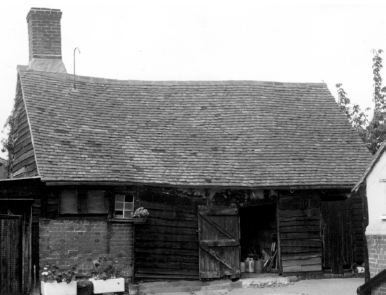 |
|
|
|
|
 |
|
|
|
|
 |
|
|
|
|
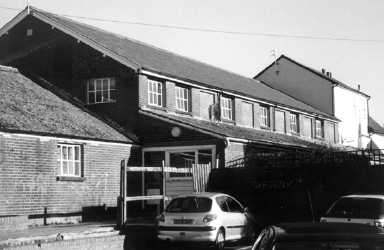 |
|
|
|
|
 |
|
|
|
|
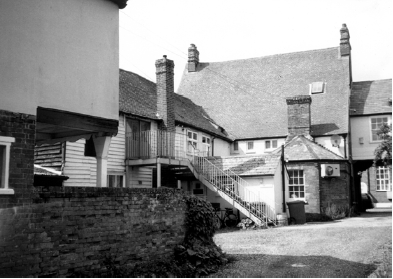 |
|
|
|
|
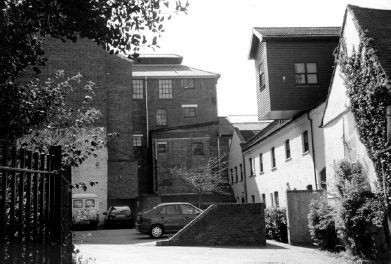 |
|
|
|
|
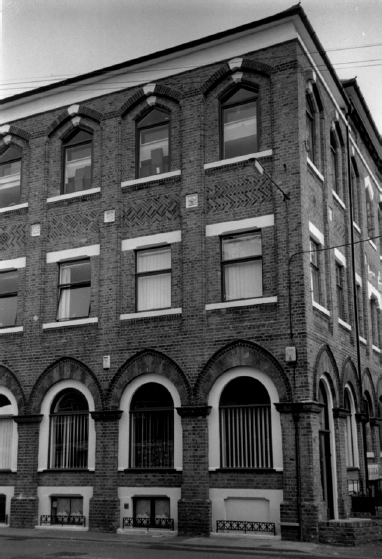 |
|
|
|
|
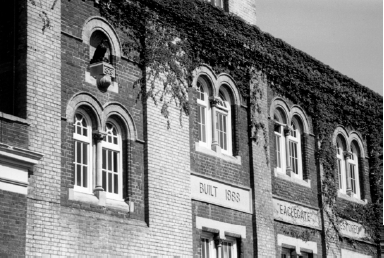 |
|
|
|
|
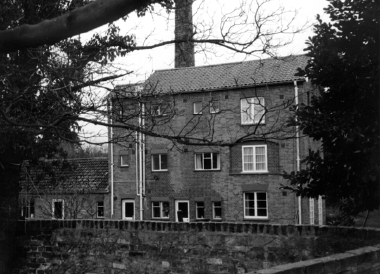 |
|
|
|
|
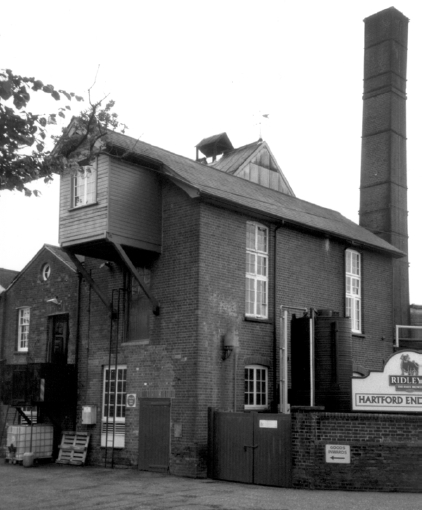 |
|
|
|
|
 |
|
|
|
|
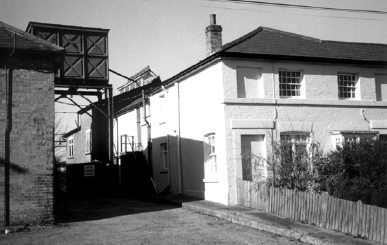 |
|
|
|
Alderton, D. & Booker, J. (1980) Batsford Guide to the Industrial Archaeology of East Anglia. London: Batsford. |
|
AOC Archaeology Ltd. (1997) Isinglass Factory Site, Coggeshall, Essex – Historic Building Appraisal. |
|
Architectural Review (1957) Breweries, Maltings and Oast-Houses. 122, 62 – 73. |
|
Booker, J. (1974) Essex and the Industrial Revolution. Chelmsford: Essex County Council. |
|
Brown, A.F.J. (1969) Essex at Work 1700 – 1815. Chelmsford: Essex County Council. |
|
Crosby, T. (2000) ‘The Development of Malthouses around the Hertfordshire – Essex Border’. Industrial Archaeology Review, Vol. XXII, No. 1, May 2000, 39 – 51. |
|
Crosby, T. (2002) ‘Essex Breweries’ - Comparative Survey of Modern/Industrial Sites and Monuments No. 16, Essex County Council internal typescript report. |
|
Emmison, F.G. (1991) Elizabethan Life: Home, Work, Land. Chelmsford: Essex Record Office. |
|
Essex County Council, Field Archaeology Group. (1996) ‘Report on the Recording & Survey of Gardners' Brewery, Bridge Street, Coggeshall, Essex’. Essex County Council internal typescript report. |
|
Essex County Council, Field Archaeology Unit. (1999) ‘The Former Adams Brewery, Trinity Street, Halstead’. Essex County Council internal typescript report. |
|
Essex Review. Vol. XII, 1903, 39. |
|
Essex Review. Vol. 60, 1951, 88. |
|
Garwood, A. (1991) ‘Essex Hospitals 1800 - 1948 – A Study of their History, Design & Architecture’. Essex County Council Internal Typescript Report. |
|
Gould, S. (1995) ‘The Essex Malt Industry – History, Technology & Architecture’. Essex County Council Internal Typescript Report. |
|
Gould, S., Crosby, T., Gibson, S. (1997) ‘Malthouses in Essex, Volume 2’ Essex County Council Internal Typescript Report. |
|
Gourvish, T.R. & Wilson, R.G. (1994) The British Brewing Industry, 1830 – 1980. Cambridge: Cambridge University Press. |
|
Jeffreys, T. (1980) Seabrooke & Sons, A Family of Brewers. Panorama (Journal of the Thurrock Local History Society), No 24, Winter 1980, 33 – 42. |
|
Lovett, M. (1981) Brewing and Breweries. Princes Risborough: Shire Publications. |
|
Pearson, L. (1999) British Breweries : An Architectural History. London: Hambledon Press. |
|
Peaty, I. P. (1992) Essex Brewers. New Ash Green: Brewery History Society. |
|
Peaty, I. P. (1997) You Brew Good Ale – A History of Small-scale Brewing. Stroud: Sutton Publishing. |
|
Peaty, I. P. (1999) ‘Boyes Croft Maltings Great Dunmow’. Brewery History, No 97, Autumn 1999, 59 – 68. |
|
Peaty, I. P. (2000) ‘Wards – A Brewing Family’. Brewery History, No 100, Summer 2000, 27 – 35. |
|
Spiller, B. (1957) ‘The Georgian Brewery’. Architectural Review, 122, 310 – 322. |
|
Steer, F.W. (1969) Farm & Cottage inventories of Mid Essex. Chichester: Phillimore. |
|
2 |
Crosby, T. (2002) ‘Essex Breweries’ - Comparative Survey of Modern/Industrial Sites and Monuments No. 16, Essex County Council internal typescript report. |
|
3 |
Emmison, F.G. (1976) ‘Elizabethan Life – Home, Work and Land’, Chelmsford: Essex Record Office. |
|
4 |
Steer, F. W. (1969) Farm and Cottage Inventories in Mid-Essex. Chichester: Phillimore. |
|
5 |
Steer, F. W. op cit |
|
6 |
Peaty, I. P. (1997) You Brew Good Ale – A History of Small-scale Brewing. Stroud: Sutton Publishing. |
|
7 |
Booker, J. (1974) Essex and the Industrial Revolution Chelmsford: Essex County Council. |
|
8 |
AOC Archaeology. (1997) ‘Isinglass Factory Site, Coggeshall, Essex’ – Historic Building Appraisal |